Sound effects
FLW Tour pros sound off on the effectiveness of rattling baits
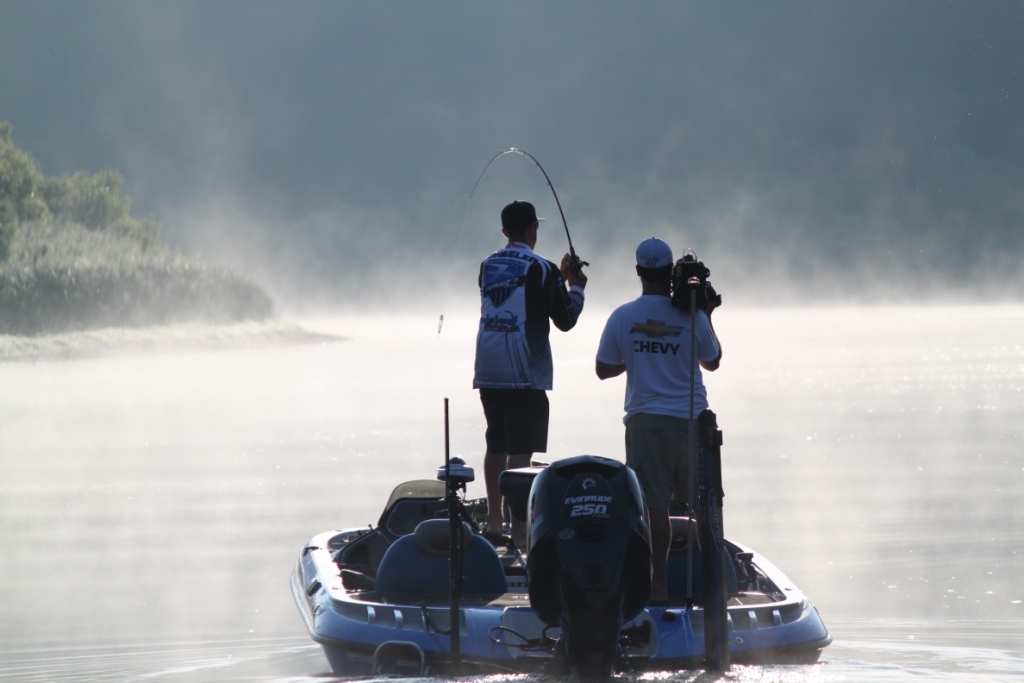
(Editor’s note: This article originally appeared in the 2013 October issue of Bass Fishing magazine. To read more compelling articles from Bass Fishing magazine each month, become an FLW subscriber member. If you’d like to sign up for a digital subscription to access articles online, click here).
Though some anglers contend that rattling baits don’t necessarily attract strikes, and might even deter them, the preponderance of evidence favors the rattle crowd. Virtually every hard lure made nowadays – crankbaits, jerkbaits, stick baits and so forth – can be had in rattling and silent versions.
To a lesser degree, the same goes for jigs and some soft plastics, and aftermarket rattles that can be inserted in a lure or somehow attached to it have raised the underwater decibel level as well. We asked a few pros what they thought about various types of lures and when they think rattles are a bonus – or a risk.
Jigs
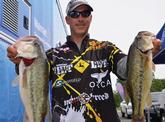 Angler: Andy Morgan
Angler: Andy Morgan
When to rattle: Cold, dirty water is the best scenario. Sometimes you can throw a lure in there next to a bass and its senses are so dulled that it won’t even know the lure is there. Rattles help in those cases. Also, in really thick cover such as a tree or a patch of grass, rattles might help a bass zero in on the jig when it can’t otherwise see it.
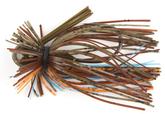 When not to rattle: About 90 percent of the time, I don’t rattle. In my opinion, and given the places we fish that get a lot of fishing pressure, I think sometimes it’s a negative signal. If the fish are keyed up, there isn’t much you can drag across the bottom that escapes their notice.
When not to rattle: About 90 percent of the time, I don’t rattle. In my opinion, and given the places we fish that get a lot of fishing pressure, I think sometimes it’s a negative signal. If the fish are keyed up, there isn’t much you can drag across the bottom that escapes their notice.
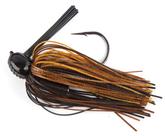 Bottom line: Rattles aren’t a big deal to me. They might help a jig fisherman at night – I don’t know, I haven’t fished for bass after dark in more than 20 years. For when I do use a rattle during a tournament, I like a War Eagle Hole in One interchangeable jig skirt. It slips up the shank of the hook and has two small rubber arms with pockets that you slip the rattles into.
Bottom line: Rattles aren’t a big deal to me. They might help a jig fisherman at night – I don’t know, I haven’t fished for bass after dark in more than 20 years. For when I do use a rattle during a tournament, I like a War Eagle Hole in One interchangeable jig skirt. It slips up the shank of the hook and has two small rubber arms with pockets that you slip the rattles into.
Line sounds
Andy Morgan on braided line:
Braided line definitely makes a sawing sound in grass or across wood, but I don’t think it makes any difference. I imagine there are a lot of strange sounds that fish pick up under the water, and they don’t get alarmed by them.
Jerkbaits
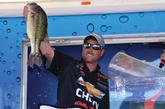 Angler: Bryan Thrift
Angler: Bryan Thrift
When to rattle: It depends on water color. Ninety percent of jerkbait bites are visual bites. The fish are going to see it from a long way off. If they can’t see it, say if the visibility is less than 3 1/2 to 4 feet, I’ll consider throwing a rattling jerkbait. Also, certain conditions call for rattling jerkbaits, such as a lot of wind, when it’s overcast or any time water visibility is affected.
 When Not To rattle: If the water is clear – say, 10 to 12 feet of visibility – it’s better to use a non-rattling jerkbait. If you’re fishing a jerkbait in cold water, you’re going to let it suspend for 15 or 20 seconds at a time anyway, so rattles don’t really come into play much when you’re dead-sticking.
When Not To rattle: If the water is clear – say, 10 to 12 feet of visibility – it’s better to use a non-rattling jerkbait. If you’re fishing a jerkbait in cold water, you’re going to let it suspend for 15 or 20 seconds at a time anyway, so rattles don’t really come into play much when you’re dead-sticking.
 Bottom line: Let water or weather conditions dictate. However, all bets are off when it comes to smallmouths. If they’re aggressive and see and hear a lure at the same time, they don’t stop and think about it too much before they commit. I’ll use rattling and nonrattling jerbaits for them – whatever it takes.
Bottom line: Let water or weather conditions dictate. However, all bets are off when it comes to smallmouths. If they’re aggressive and see and hear a lure at the same time, they don’t stop and think about it too much before they commit. I’ll use rattling and nonrattling jerbaits for them – whatever it takes.
Diving crankbaits
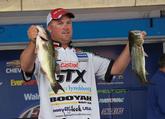 Angler: David Dudley
Angler: David Dudley
When to rattle: When the water is super muddy, I’ll go with a rattling crankbait – maybe white or chartreuse sides with a black back. Beyond that, some days the fish want a multi-rattle version, and some days they want the one rattle. I let them tell me what they want. And it might change from day to day.
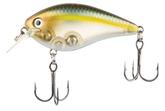 When not to rattle: The rest of the time. I’ve never heard shad rattling when they’re swimming through the water.
When not to rattle: The rest of the time. I’ve never heard shad rattling when they’re swimming through the water.
 Bottom line: I do believe in rattles in muddy water, but it’s not like you’re faced with muddy situations all the time. Also, what I consider muddy, somebody else might consider clean, or vice versa. A lot of fishing is just a bunch of applied opinions. There really is no way to home in on one thing that works all the time in a certain situation.
Bottom line: I do believe in rattles in muddy water, but it’s not like you’re faced with muddy situations all the time. Also, what I consider muddy, somebody else might consider clean, or vice versa. A lot of fishing is just a bunch of applied opinions. There really is no way to home in on one thing that works all the time in a certain situation.
Lipless crankbaits
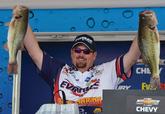 Angler: Dan Morehead
Angler: Dan Morehead
When to rattle: Prespawn in grass or off-color, dirty water. Sometimes rattling baits can trigger bites in cold water better than nonrattling baits.
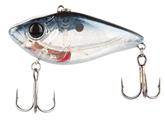 When not to rattle: I found that rattling baits don’t work as well in very clear water, where generally it’s best to be stealthier. Also, nonrattling baits are better in highly pressured areas.
When not to rattle: I found that rattling baits don’t work as well in very clear water, where generally it’s best to be stealthier. Also, nonrattling baits are better in highly pressured areas.
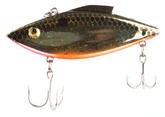 Bottom line: There’s so doggone many different rattling crankbaits now. Some have one BB, some are full of tungsten weights, some have a few weights, some have bigger weights – and they all work at times. Some days it’s a matter of throwing a lipless crankbait that’s different from what everybody else seems to be throwing. Fish will show different preferences from one day to the next, and when you’re fishing it’s a good idea to have lipless crankbaits that make different sounds, or no sounds at all.
Bottom line: There’s so doggone many different rattling crankbaits now. Some have one BB, some are full of tungsten weights, some have a few weights, some have bigger weights – and they all work at times. Some days it’s a matter of throwing a lipless crankbait that’s different from what everybody else seems to be throwing. Fish will show different preferences from one day to the next, and when you’re fishing it’s a good idea to have lipless crankbaits that make different sounds, or no sounds at all.
Topwater lures
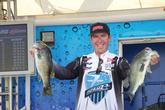 Angler: Jacob Wheeler
Angler: Jacob Wheeler
When to rattle: Most of the time, fishing is all about getting their attention – getting them to look at a lure and then go after it. A rattling topwater will call fish up from deep water, or when they’re holding in brush piles or other cover. So I throw a rattling lure about 90 percent of the time, usually in the form of a No. 11 Rapala Skitter Walk.
 When not to rattle: By the end of summer bass have seen just about every kind of rattling topwater there is. That’s when I change up and show them something without rattles. A lot depends on fishing pressure.
When not to rattle: By the end of summer bass have seen just about every kind of rattling topwater there is. That’s when I change up and show them something without rattles. A lot depends on fishing pressure.
 Bottom line: When bass are feeding on shad and busting all over the surface, you have to make a commotion that will get their attention. That’s prime time for a rattling topwater.
Bottom line: When bass are feeding on shad and busting all over the surface, you have to make a commotion that will get their attention. That’s prime time for a rattling topwater.
Texas/Carolina rigs
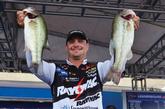 Angler: Jason Christie
Angler: Jason Christie
Carolina rig: I don’t think you can improve on a tungsten weight and a glass bead.
Texas rig: an XCalibur worm weight and a glass rattle weight that can be inserted into the plastic
When to rattle: My rule of thumb is that the dirtier the water, the more sound I want.
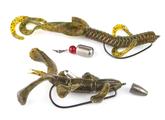 When not to rattle: I don’t use rattles if I’m fishing somewhere that’s getting a lot of fishing pressure. In those cases, I want the lure to appear as natural as possible.
When not to rattle: I don’t use rattles if I’m fishing somewhere that’s getting a lot of fishing pressure. In those cases, I want the lure to appear as natural as possible.
Bottom line: I might go down a bank with a rattling bait and catch fish, then turn around and go back with a nonrattling bait and catch fish. To me, there aren’t many situations where it has to be one way or the other. Nothing’s set in stone.
Pitch-perfect rattle sounds
Jason Christie on types of rattles:
Tungsten weights have a louder rattle, but lower pitch. Regular BBs have more of a high pitch. To me the lower pitch is a more realistic sound, but sometimes the fish want something else. Try different things until you find what works the best.